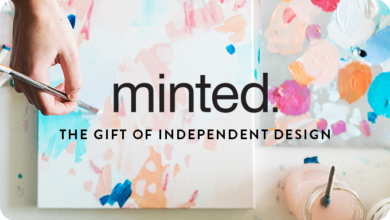Color Theory Explained: A Guide for Beginners

Introduction
Color theory is a fundamental aspect of design and art that helps creatives make informed decisions about color choices and combinations. Understanding color theory can enhance the visual impact of your work, whether you are an artist, designer, or marketer. This guide delves into the basics of color theory, its psychological impact, and practical applications across various fields, providing a thorough understanding to improve your creative endeavors.
Fundamentals of Color Theory
The Color Wheel
The color wheel is a visual representation of colors arranged according to their chromatic relationships. Developed by Sir Isaac Newton in 1666, the traditional color wheel consists of primary, secondary, and tertiary colors. Primary colors (red, blue, yellow) are the foundation, mixing to create secondary colors (green, orange, purple). Further mixing of primary and secondary colors results in tertiary colors, such as red-orange and blue-green. Understanding the color wheel helps creatives select harmonious colors and create aesthetically pleasing compositions.
The distinction between warm and cool colors is another crucial concept. Warm colors (reds, oranges, yellows) evoke energy and warmth, while cool colors (blues, greens, purples) are calming and serene. Using this knowledge, designers can influence the emotional tone of their work.
Color Harmony
Color harmony involves the strategic use of color combinations to create a visually pleasing effect. Several types of color schemes aid in achieving harmony: complementary (colors opposite each other on the wheel), analogous (colors next to each other), triadic (three colors evenly spaced), and tetradic (four colors forming a rectangle). Each scheme offers a different visual impact, allowing for creativity and variety in design.
Balancing colors in a composition is essential. A harmonious palette avoids overwhelming the viewer, instead creating a cohesive and engaging experience. For instance, using a dominant color with accents of complementary or analogous colors can guide the viewer’s eye and highlight key elements.
Color Context
Color context refers to how colors interact with and influence one another. The perception of a color can change based on its surrounding colors. For example, a gray square on a white background may appear darker than the same square on a black background. This phenomenon is crucial for designers to understand, as it affects how colors are seen in different contexts.
Optical illusions, such as the simultaneous contrast effect, demonstrate the importance of color context. A color can appear to change its hue or brightness when placed next to another color. By mastering color context, designers can manipulate visual effects and enhance the overall composition of their work.
The Psychological Impact of Colors
The Science of Color Perception
Color perception begins with the human eye and brain. Light enters the eye and is absorbed by photoreceptor cells, which convert it into electrical signals sent to the brain. The brain interprets these signals as colors. The perception of color can be influenced by several factors, including lighting conditions, context, and individual differences.
Understanding the science behind color perception helps designers create more effective visuals. For example, certain lighting conditions can alter the appearance of colors, so it’s essential to consider how a design will be viewed in different environments.
Emotional and Psychological Effects of Colors
Colors have a profound impact on emotions and psychology. Red is often associated with energy, passion, and urgency, while blue conveys calmness, trust, and stability. These associations can vary across cultures but generally follow similar patterns. For instance, green is widely linked to nature and tranquility.
Using color psychology, designers can evoke specific emotions and reactions. In marketing, red can create a sense of urgency, prompting quick action, while blue can foster trust and reliability, ideal for financial institutions. By strategically choosing colors, designers and marketers can influence the viewer’s mood and behavior.
Using Color Psychology in Design
Incorporating color psychology into design involves more than selecting visually appealing colors. It requires an understanding of the target audience and the desired emotional response. For example, a healthcare website might use blues and greens to evoke calmness and trust, whereas a fast-food chain might use reds and yellows to stimulate appetite and excitement.
Color choices in web and graphic design can significantly impact user experience and conversion rates. A well-thought-out color scheme can guide users through a website, highlight important information, and create a cohesive brand identity. By applying color psychology, designers can enhance the effectiveness of their work.
Applying Color Theory in Various Fields
Visual Arts
In visual arts, color theory is essential for creating compelling and harmonious compositions. Artists use color theory to mix paints, create depth, and evoke emotions. Understanding how colors interact allows artists to achieve desired effects and communicate their vision effectively.
Famous artworks often showcase masterful use of color. For example, Vincent van Gogh’s “Starry Night” uses contrasting colors to create a dynamic and emotional scene. By studying such works, artists can learn how to apply color theory to enhance their own creations.
Interior Design
Color plays a crucial role in interior design, affecting the ambiance and mood of a space. Designers use color to create harmony, contrast, and visual interest in a room. Understanding color theory helps designers choose the right paint colors, furnishings, and decor to achieve the desired effect.
Practical tips for choosing colors in interior design include considering the room’s purpose, natural lighting, and existing elements. For instance, a bedroom might benefit from calming blues and greens, while a living room can be enlivened with warm, inviting colors. By applying color theory, interior designers can create functional and aesthetically pleasing spaces.
Fashion and Beauty
Color coordination is vital in fashion and beauty, influencing trends and personal style. Fashion designers use color theory to create cohesive collections and make bold statements. Understanding how colors complement each other allows for creative and stylish combinations.
Seasonal color palettes guide fashion trends, with certain colors becoming popular during specific times of the year. In beauty, makeup and hair color choices are influenced by skin tones and personal preferences. By mastering color theory, professionals in the fashion and beauty industry can enhance their designs and client satisfaction.
Digital Design
In digital design, color is crucial for user interface (UI) and user experience (UX). The right color choices can improve readability, navigation, and overall aesthetics of a digital product. Designers use tools like Adobe Color and Canva to create harmonious color palettes and ensure consistency across platforms.
Case studies of successful digital designs highlight the importance of color theory. For example, a well-designed app with a cohesive color scheme can enhance user engagement and satisfaction. By applying color theory, digital designers can create visually appealing and effective products.
Tools and Resources for Mastering Color Theory
Online Tools and Apps
Numerous online tools and apps can aid in mastering color theory. Color palette generators, such as Coolors and Adobe Color, help create harmonious color schemes. These tools allow users to experiment with different combinations and find the perfect palette for their projects.
Design software like Adobe Photoshop and Illustrator provides advanced features for color manipulation and selection. Using these tools, designers can refine their color choices and create professional-quality work.
Books and Courses
Several books and courses offer in-depth knowledge of color theory. Recommended readings include “Interaction of Color” by Josef Albers and “Color: A Workshop for Artists and Designers” by David Hornung. Online courses from platforms like Coursera and Skillshare provide practical lessons and exercises to enhance understanding.
By investing in educational resources, creatives can deepen their knowledge of color theory and improve their skills. Continuous learning is essential for staying current and effective in any creative field.
Professional Tips and Techniques
Industry experts offer valuable tips and techniques for mastering color theory. One common advice is to create a color mood board to visualize and test color combinations before applying them to a project. Another technique is to use color swatches and samples to see how colors interact in real-world conditions.
Avoiding common pitfalls, such as overusing bold colors or ignoring color contrast, can significantly improve the effectiveness of a design. By learning from professionals and applying their advice, creatives can enhance their work and achieve better results.
Conclusion
Color theory is a vital aspect of design and art, influencing how we perceive and interact with visuals. By understanding the fundamentals, psychological impact, and practical applications of color theory, creatives can enhance their work and communicate more effectively. Continuous learning and experimentation with color can lead to innovative and impactful designs.





